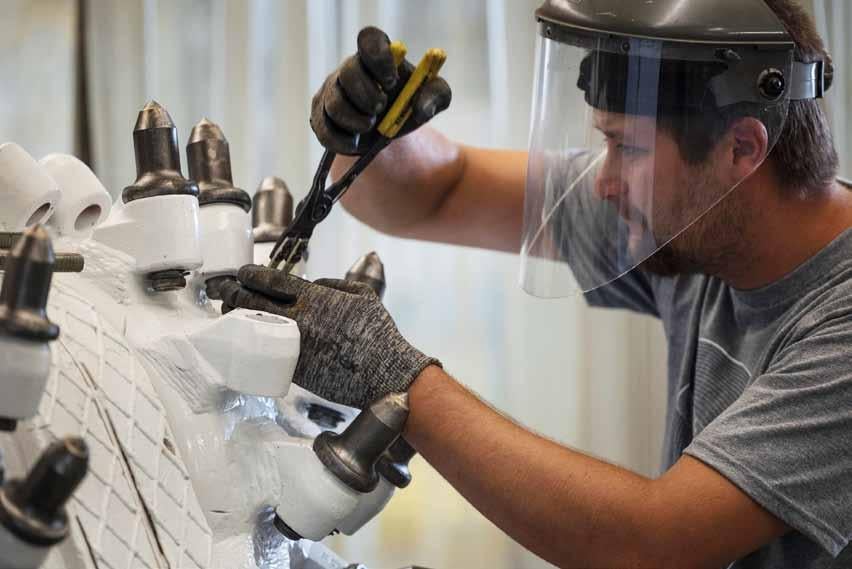
3 minute read
Tartisan Nickel Corp.’s Kenbridge Nickel Deposit: A near-term production candidate
In 2017-2018, Tartisan Nickel Corp. (CSE: TN, OTCQX: TTSRF, FSE: 8TD) underwent a strategic review of how the Company could move forward in the face of challenging metals markets. At the time, there appeared to be a move towards clean-air electric vehicles (eVs), an opportunity which Tartisan thought was going to become a driving force in the metals market. This thinking led to a merger with Canadian Arrow Mines Limited, a junior explorer who owned the Kenbridge Nickel Project, a known “never been mined” deposit, in northwestern Ontario.
According to Tartisan CEO and president, Mark Appleby, the company was reviewing advanced nickel properties searching for a low CAPEX project with robust economics. The reasoning was simple in his mind. EVs and battery storage are becoming increasingly relevant, and nickel would be the main component for high-range battery storage. Today the lithium-ion battery is the nickel metal hydride battery (NiMH) and the lithium nickel manganese cobalt battery (NMC) are nickel-rich with mainstream acceptability. On average, 60 kilograms of contained nickel is in an average Tesla automobile battery.
Nickel sulphide deposits are the preferred nickel mineral deposits to meet the battery demand, as opposed to nickel laterite deposits which require extreme amounts of energy to convert to acceptable car batteries. There are a handful of larger lowgrade nickel sulphide projects, which will require large capital expenditures combined with years of assessment and permitting to get to a production decision. There are, however, even fewer moderate to higher-grade nickel sulphide deposits, which could be developed towards production in a short timeline with minimal capital outlay, Kenbridge being an obvious standout with approximately a threeyear timeline to a production scenario.
The Kenbridge Nickel Deposit was originally discovered in 1937 by Coniagas and is in northwestern Ontario between Fort Frances and Dryden. Falconbridge Limited acquired the property in 1952. in 1954 they began to construct a 622-metre-deep shaft. subsequently, two working level stations were developed below surface, and a bulk sample was extracted. At that time, there was not a feasible way to move the ore to facilities, so it was shut down in 1958. The project sat virtually dormant for several years until 2007 when Canadian Arrow Mines Limited acquired the property, completed a 40,000-metre drill campaign, and proceeded to establish a Ni 43-101 resource estimate and preliminary economic assessment (PeA).
According to Appleby, the Kenbridge Nickel Deposit checked off many of the boxes that were important to the Company’s strategy. The project is in a stable political and mining friendly region (New Gold’s Rainy River Gold Deposit is located 80 kilometres to the south) and has all-season road access to within 12 kilometres of the known deposit. The Company has recently press released the Kenbridge 2022 PeA. There is a current mineral resource estimate (June 2, 2022, seDAR) for the Kenbridge Nickel Project as a whole. Previous metallurgical work completed by Canadian Arrow highlighted excellent recoveries and metallurgical properties for the outlined mineralization. The 2022 PeA envisions a 1,500-ton-per-day underground mining operation with initial capital expenditures of approximately $134 million and initial mine life of nine years.
There is potential to increase the mineral resource estimate by further drilling along strike and down dip. Additionally, there are several untested exploration targets on the property, such as at the Kenbridge North target, which have similar geophysical characteristics to the Kenbridge Deposit.
According to Appleby, the PEA highlighted robust economics for the project under metal prices and exchange rates at the time of publishing.
“We began this spring on construction of an all-season access road to site that will facilitate large vehicles. Environmental baseline studies additionally commenced this spring and are key to the permitting and mine application process. We feel that we are in good shape to head to a PFs (prefeasibility study) and then Fs (feasibility study) in the near term. Tartisan Nickel Corp. with three ‘critical metals’ is the perfect candidate for vertical integration and becoming apart of the North American supply chain”.










